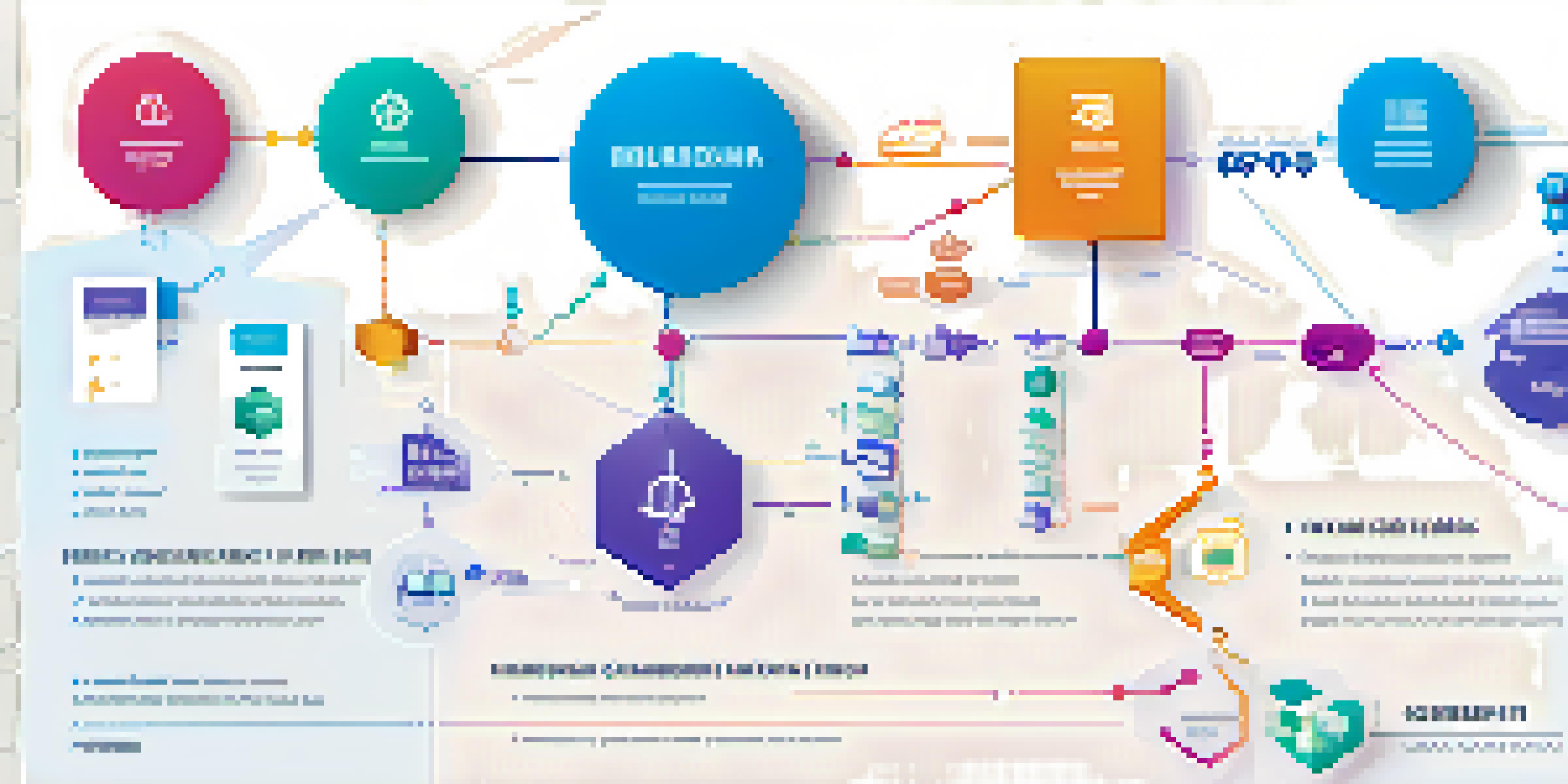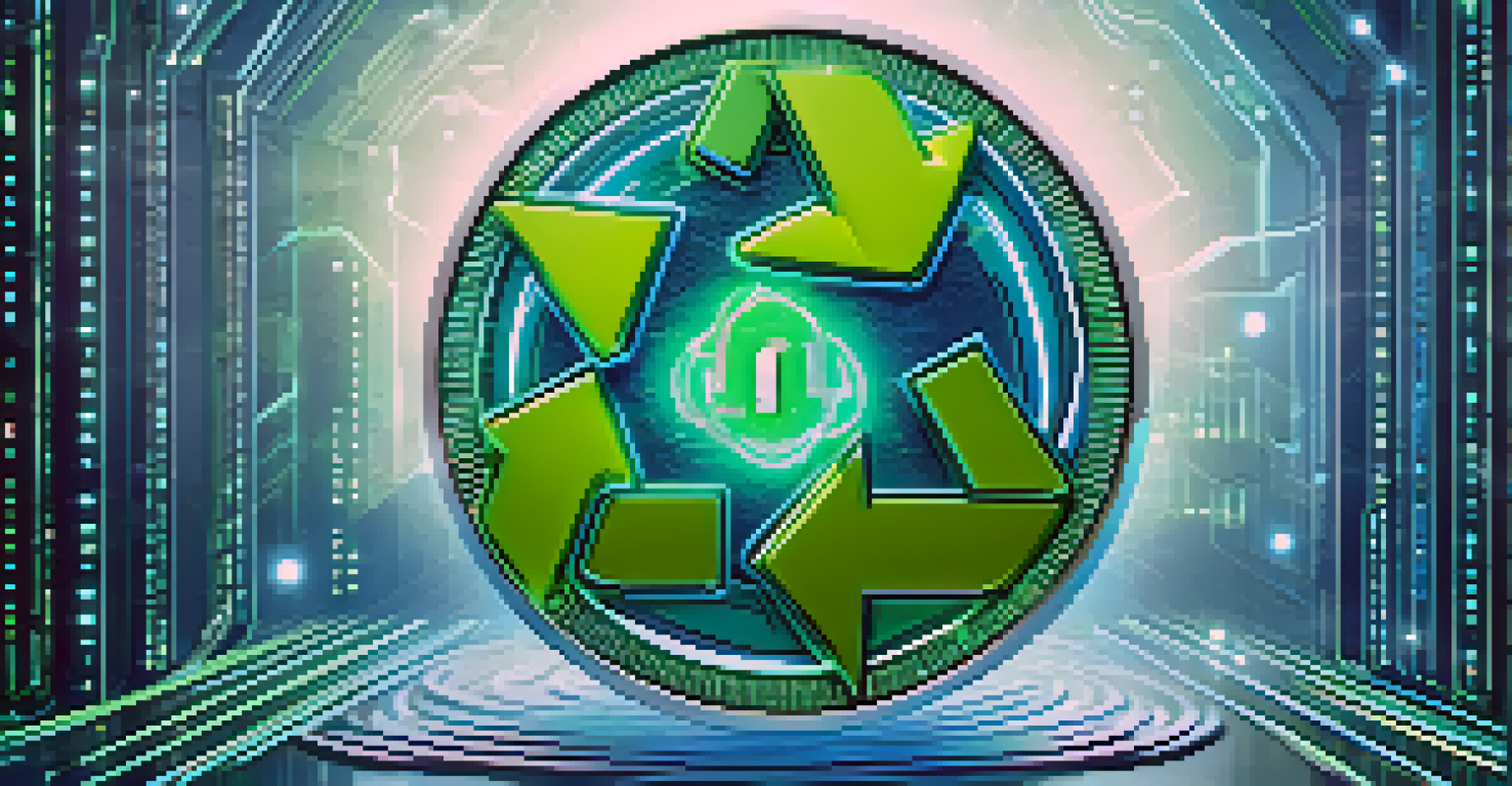Blockchain Technology: A Tool for Reducing Carbon Footprints

Understanding Blockchain Technology and Its Basics
At its core, blockchain is a decentralized digital ledger that records transactions across many computers. This ensures that the recorded data cannot be altered retroactively without the consensus of the network. Think of it like a shared notebook where everyone can see the entries but no one can erase them, making it transparent and secure.
Blockchain is the tech. Bitcoin is merely the first mainstream manifestation of its genius.
Blockchain technology is often associated with cryptocurrencies, but its applications extend far beyond digital money. Industries such as supply chain management, healthcare, and energy are starting to embrace it to enhance transparency and efficiency. In essence, blockchain provides a way to verify and trace transactions in real-time, which can be crucial for sustainability efforts.
Given its inherent characteristics, blockchain can play a significant role in tracking carbon emissions and promoting environmentally friendly practices. By providing a tamper-proof record of carbon offsets and emissions, companies can be held accountable for their environmental impact, fostering a culture of sustainability.
The Role of Blockchain in Supply Chain Transparency
Supply chains are often complex and opaque, which can lead to environmental irresponsibility. Blockchain technology can enhance transparency by allowing all stakeholders in the supply chain to track products from origin to consumer. Imagine being able to see the entire journey of your product, including its carbon footprint, right from the farm to your doorstep.

For instance, companies can use blockchain to verify that materials sourced for manufacturing are sustainable and ethically obtained. This not only helps in reducing emissions but also builds consumer trust. When customers know where their products come from and how they were made, they are more likely to support environmentally conscious brands.
Blockchain Enhances Supply Chain Trust
By providing a transparent record of product journeys, blockchain fosters consumer trust in sustainable practices.
Moreover, the data captured on a blockchain can be used to optimize logistics and reduce waste. By analyzing this data, companies can find efficiencies that lower their emissions, such as minimizing transportation distances or improving inventory management.
Carbon Credit Trading and Blockchain Integration
Carbon credits are permits that allow the holder to emit a certain amount of carbon dioxide. The idea is that companies can buy and sell these credits, creating a financial incentive to reduce emissions. Blockchain can streamline this trading process by providing a secure and transparent platform for transactions.
The future will be about connecting the unconnected and providing those connections with a layer of trust.
Using blockchain, companies can easily track their carbon credits and trade them in real-time. This minimizes the risk of fraud and ensures that each credit is accounted for, similar to how digital currencies are exchanged. In this way, blockchain can enhance the credibility of carbon markets.
Furthermore, the integration of smart contracts—self-executing contracts with the agreement directly written into code—can automate the trading process, making it more efficient. This means that companies can focus more on reducing emissions rather than getting caught up in administrative tasks.
Empowering Renewable Energy Initiatives with Blockchain
Renewable energy sources like solar and wind power are essential for reducing our carbon footprint. Blockchain can facilitate the sharing and trading of renewable energy, allowing individuals and businesses to buy and sell excess energy directly. It's like creating a local energy marketplace where everyone can benefit.
For example, a household with solar panels can sell their surplus energy to neighbors through a blockchain platform. This not only promotes the use of renewable energy but also incentivizes more people to invest in sustainable solutions. Everyone wins when the power of the sun can be traded like a commodity.
Carbon Credit Trading Made Efficient
Blockchain streamlines carbon credit trading, reducing fraud risks and enhancing market credibility.
Additionally, blockchain can help track renewable energy production and its impact on carbon emissions. By providing a transparent record, stakeholders can better understand the benefits of switching to greener energy sources and encourage more widespread adoption.
Encouraging Sustainable Practices Through Tokenization
Tokenization refers to the process of converting rights to an asset into a digital token on the blockchain. This can be applied to sustainability initiatives, offering rewards for environmentally friendly behaviors. Imagine earning tokens for recycling, which can then be exchanged for discounts or benefits—an enticing way to foster eco-conscious habits.
By creating a token economy around sustainability, businesses can engage consumers in a new way. Tokens can serve as an incentive for individuals to reduce their carbon footprints, like using public transport or participating in tree planting activities. The more they contribute, the more they earn.
Moreover, these tokens can be tracked on the blockchain, ensuring that the rewards are genuine and not inflated. This transparency helps build trust among participants and encourages continuous engagement in sustainability efforts.
Challenges and Limitations of Blockchain for Sustainability
While blockchain presents exciting opportunities for reducing carbon footprints, it is not without its challenges. One major concern is the energy consumption associated with blockchain networks, especially those that rely on proof-of-work mechanisms like Bitcoin. This paradox raises questions about the net benefits of using blockchain for sustainability.
Additionally, implementing blockchain solutions can require significant investment and technical expertise, which may be a barrier for smaller companies or organizations. The complexity of integrating new technology into existing systems can also pose challenges. Therefore, it’s crucial to evaluate the feasibility of blockchain projects carefully.
Tokenization Encourages Eco-Friendly Actions
Tokenization rewards sustainable behaviors, motivating individuals to engage in environmentally conscious practices.
Moreover, regulatory frameworks around blockchain technology are still developing. For widespread adoption in sustainability efforts, consistent guidelines and standards will be necessary to ensure that all stakeholders can participate fairly and effectively.
Looking Ahead: The Future of Blockchain and Carbon Reduction
As awareness of climate change grows, the demand for innovative solutions like blockchain is likely to increase. With its potential to enhance transparency, efficiency, and accountability, blockchain technology can become a vital tool in the fight against climate change. It’s an exciting frontier that many organizations are beginning to explore.
In the coming years, we can expect more pilot projects and collaborations that test blockchain applications in sustainability. These initiatives will provide valuable insights into best practices and pave the way for broader adoption. The future is looking bright as companies and communities come together to leverage technology for a greener planet.

Ultimately, the intersection of blockchain and sustainability holds great promise. By embracing this technology, we can empower individuals, industries, and governments to take meaningful action toward reducing carbon footprints and protecting our environment for generations to come.